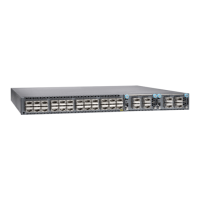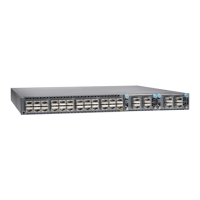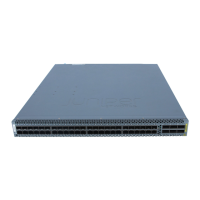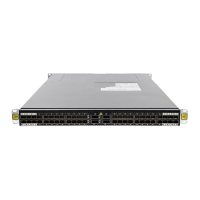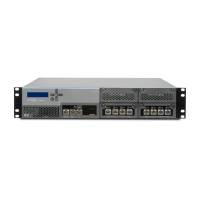CHAPTER 7
Transceiver and Cable Specifications
•
Determining Transceiver Support for the QFX5110 on page 61
•
Cable Specifications for QSFP+ and QSFP28 Transceivers on page 62
•
Cable Specifications for Console and Management Connections for the QFX
Series on page 64
•
Understanding QFX Series Fiber-Optic Cable Signal Loss, Attenuation, and
Dispersion on page 64
•
Calculating the Fiber-Optic Cable Power Budget for a QFX Series Device on page 66
•
Calculating the Fiber-Optic Cable Power Margin for a QFX Series Device on page 66
Determining Transceiver Support for the QFX5110
The port panel of the QFX5110-48S supports 48 logical 10-Gigabit Ethernet ports. These
data ports (0 through 47) support either 1-Gigabit small form-factor pluggable (SFP) or
10-Gigabit Ethernet Ethernet small form-factor pluggable plus (SFP+) transceivers. You
can also use SFP+ DAC cables and 10-Gigabit active optical cables (AOC) in any access
port.
The remaining 4 QSFP28 ports (48 through 51) support speeds of 40 Gbps or 100 Gbps.
Each port can be configured as an independent 100-Gigabit Ethernet port or as an
independent 40-Gigabit Ethernet port. These port are usually used as uplinks. In
40-Gigabit Ethernet mode, these ports can be channelized using QSP+ to SFP+ DAC
breakout (DACBO) cables.
You can find information about the optical transceivers supported on your Juniper device
by using the Hardware Compatibility Tool. In addition to transceiver and connection type,
the optical and cable characteristics–where applicable–are documented for each
transceiver. The Hardware Compatibility Tool enables you to search by product, displaying
all the transceivers supported on that device, or category, by interface speed or type. The
list of supported transceivers for the QFX5110 is located at
https://pathfinder.juniper.net/hct/product/#prd=QFX5110.
CAUTION: If you face a problem running a Juniper Networks device that uses
a third-party optic or cable, the Juniper Networks Technical AssistanceCenter
(JTAC) can help you diagnose the source of the problem. Your JTAC engineer
might recommend that youcheck the third-party optic or cable and potentially
61Copyright © 2017, Juniper Networks, Inc.
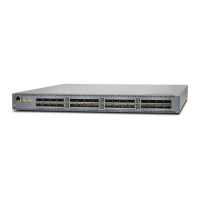
